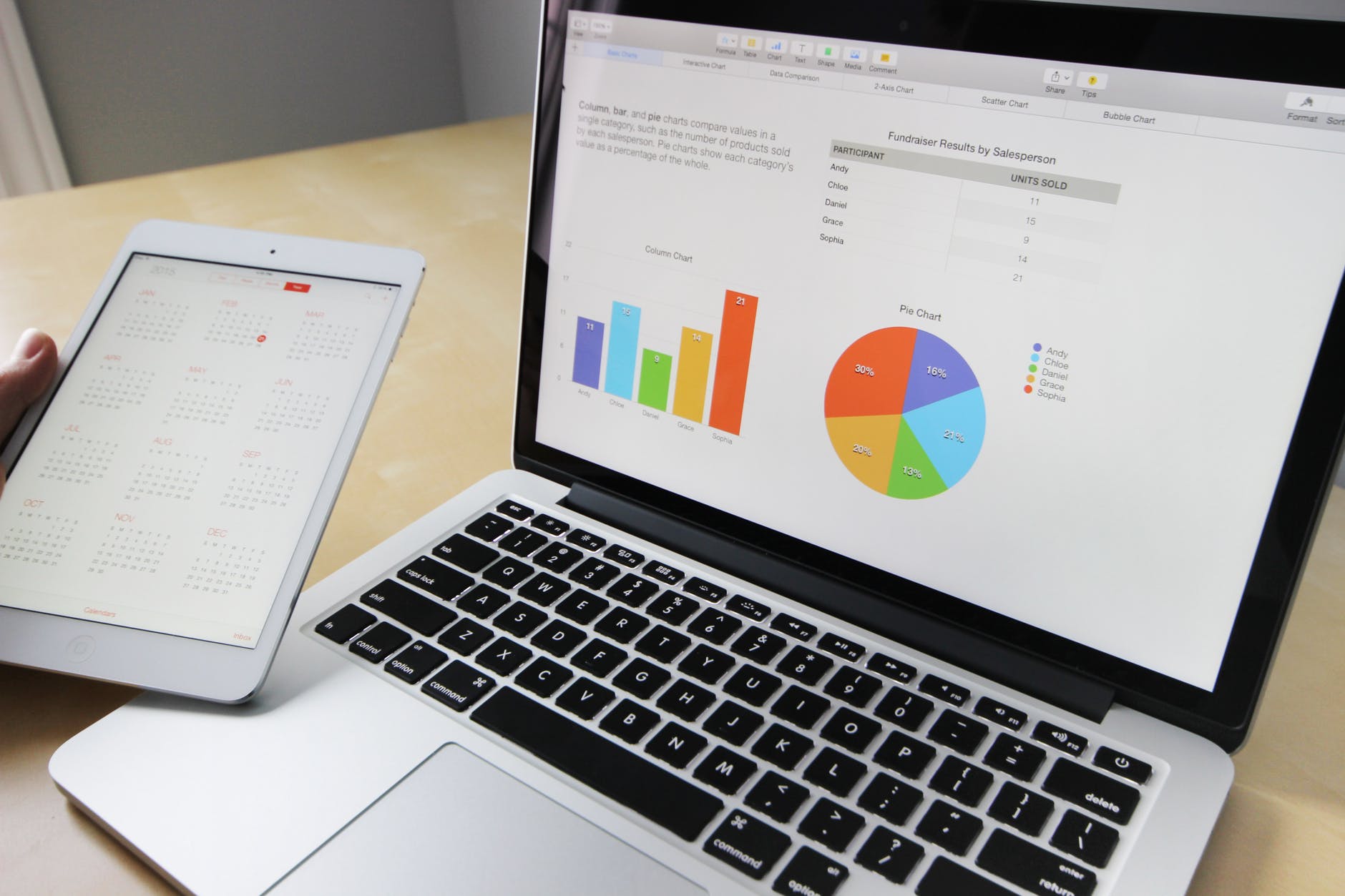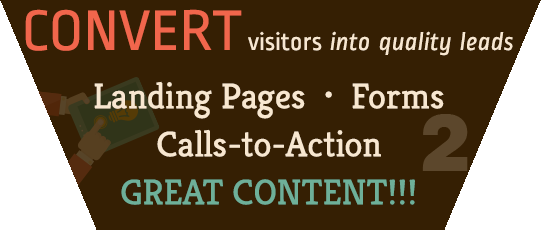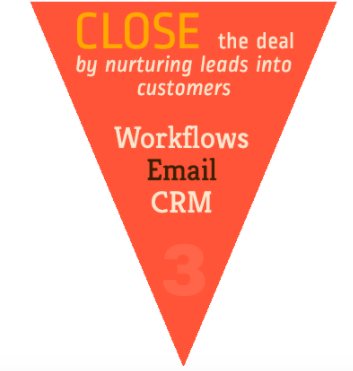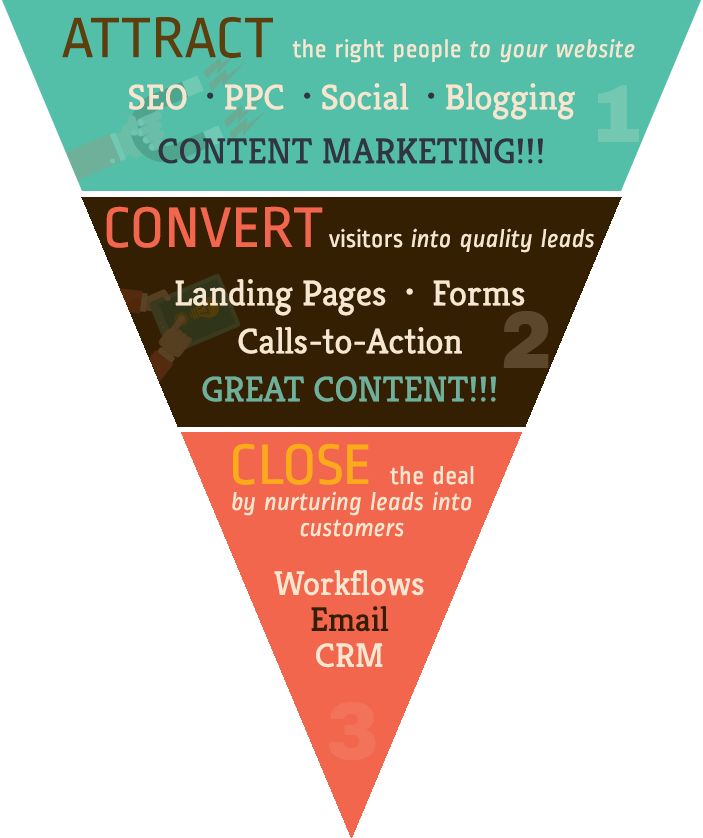Inbound Marketing Blog
for Manufacturers and Healthcare Companies
Understanding The Inbound Marketing Process

Do you know what the inbound marketing process is? You may have heard of it, but do you truly "get it"? Most people we ask don't. That's okay. It's much more straight forward than you probably think.
By understanding the inbound marketing process, you will have a better understanding of how the various tactics for online marketing work to accomplish the ultimate goal of increasing sales and profits. Understanding these stages can help make developing an inbound marketing process easier. Let's take a look at the simple layers of the process.
Attract - Beginning of the Process
People often say they need SEO, more Facebook fans, more Twitter followers, etc. ... Those are all just means of getting what they really need, more high-quality visitors to their website. The beginning stage of the inbound marketing process is all about getting the right visitors to your website, in as high of a quantity as possible.
SEO is one of the best ways to do this, but reaching prospects while they are looking for your solution with PPC can be extremely effective while your SEO strategy is just starting. Social media is a great way to share your content marketing and generate amplify your message.
All of these tactics are meant to get highly targeted, ideal buyers to your website. Once they are there, we want to convert a high percentage of these visitors to leads. That leads us to the next stage of the inbound marketing process: the conversion stage.
Convert - Middle of the Process

People online can be a bit like butterflies, fluttering around to whatever catches their attention next. They are the epitome of A.D.D.. Believe it or not, this represents a tremendous opportunity to you as an inbound marketer. Your great content may have pulled them into your site, but the calls to action you place with the great content will distract the new visitor into clicking to see what the shiny object is. Often the shiny object is a longer form piece of content that would really benefit this visitor.
Once they click the call to action, they should be taken to landing page. The landing page eliminates all distractions. There are no call outs to other areas of the site, social media sharing, or navigation.
The landing page is the equivalent of trapping the visitor and the shiny object they chased into a closet with no exit sign. The visitor is forced to focus on only the shiny object - the content piece they coveted. All they have to do is provide you with their email address and you will send it to them for FREE! Simple! You've just generated a lead.
Close - Middle of the Process

Now you need to keep their attention by providing more free value. This helps to further qualify the lead until they are ready to be closed into a sale and customer. This process requires excellent planning and diligent effort to outline workflows for following up with the leads generated in the middle of the process. The workflows will ensure that emails are sent to the leads at appropriate intervals, follows/likes/circles/connections happen on social media and live bodies make contact with the leads at the appropriate step of your process.
Delight - End of the Process
The delight stage is the final stage in the buyer's journey. Although at this point the purchase has already been made, it is still equally as important as all of the other stages.
Did you know that one of the best forms of advertisement is free? Positive word-of-mouth recommendations from a satisfied buyer to friends and family is a huge asset.
Satisfied buyers that recommend your company are basically marketing for you for free! This is why it's so important to make customer service and user experience a priority throughout the entire buyer's journey.
Implementing the Inbound Marketing Process
Understanding the 4 main stages of the inbound marketing process will lead to increased success. Happy and satisfied customers will result in a successful business. Learn more about the inbound marketing process here:
DOWNLOAD OUR INBOUND MARKETING CHECKLIST
(Editor's note: This article was originally published in October 2014 and was recently updated.)
Our Blogs, Direct to Your Inbox!
How to Audit your Online Marketing
If you are executing digital marketing, congratulations! You are most likely already one step ahead of your competition, and making strides to meaningfully connect with prospects online. But, how do you know if you’re seeing continual success year over year, and improving your metrics?
Without the tools in place to analyze and benchmark your efforts, it is impossible to scale your online marketing and ensure continuous success.


